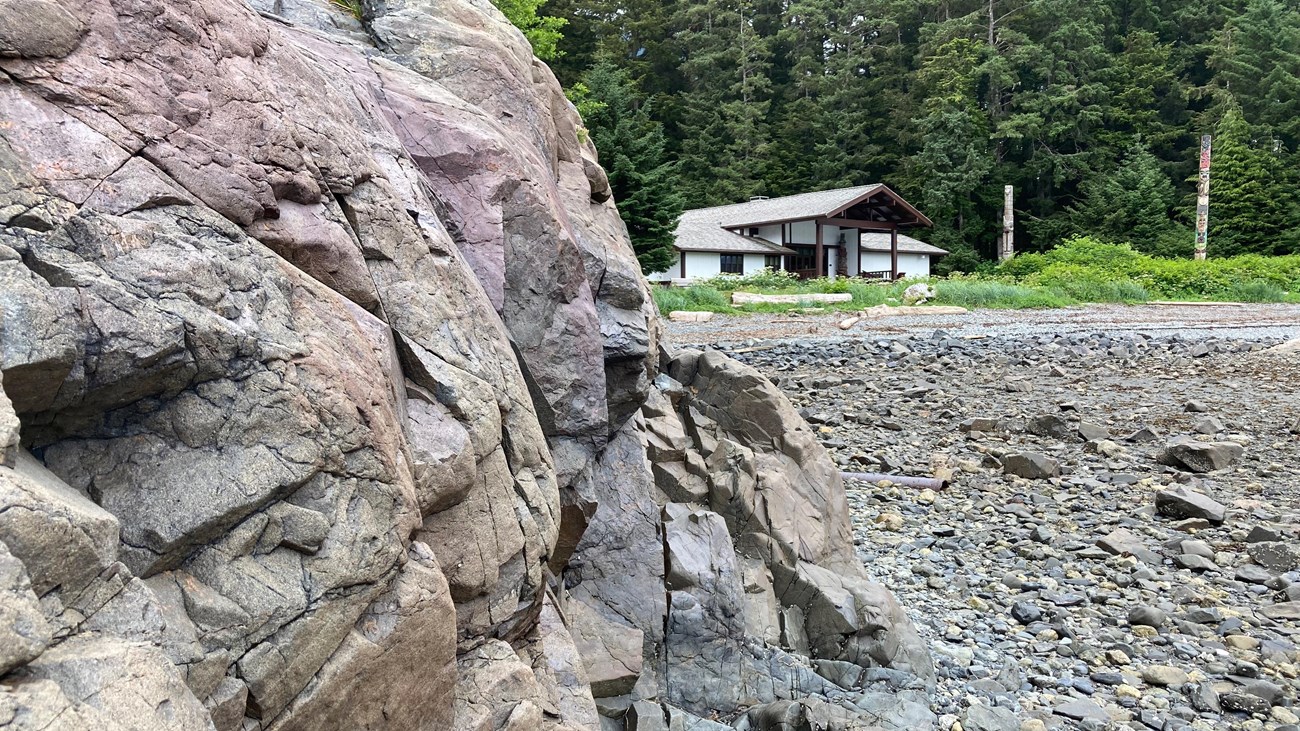Last updated: February 6, 2023
Thing to Do
Find Sitka's Bedrock

NPS Photo
The place you travel through today is very different from the place you might have traveled through millions of years ago. The bedrock under you is a sedimentary rock called Sitka Graywacke. It formed on the floor of the Pacific Ocean back when dinosaurs ruled the earth. Graywacke is... gray in color. It is made of small, squished-together pieces of mud and sand eroded from other rocks. After forming at the bottom of the ocean, this graywacke was gradually pushed upward into its present position by motion between the Pacific tectonic plate and the North American tectonic plate.
This bedrock was shaped by other forces more recently: glaciers during the last ice age and, more recently, the Pacific Ocean and Kaasda Héen (Indian River). Over ten thousand years ago glaciers carved Sitka Graywacke near Merrill Rock into the smooth, curvy shapes you find now. Ocean tides and waves broke the bedrock down further into cobble- and sand-covered beaches. Water in Kaasda Héen also moved broken bedrock down to this beach, smoothing it into cobbles along the way.
Find an outcrop—a large, exposed piece of rock—that is generally gray in color and granular. That's graywacke! Notice its overall rounded shape and the small grains you can feel on its surface. Now pay even closer attention. Try to find one of the few colors that is not gray or one of the few places where the texture of the rock changes. There are not many, compared to other types of rock! Imagine this rock in its original location: on the bottom of the ocean, with occasional slides of mud and sand falling on it. Now imagine it being squeezed and pressed really hard as it is jammed upward in a huge collision. Finally, image it being ground down by ice and ocean waves. Find the small patches of lichen that continue to break it apart, physically and chemically.
Remember to make all your observations without changing anything. Graffitiing or taking rocks from the park prevents other people from enjoying it the way you did.
Pets are allowed on trails that start at the visitor center, but not indoors. You must keep your pet on a leash that is no more than six feet long and dispose of your pet's waste in a trash can.
Find operating hours and seasons on the park website.
Two accessible parking spaces are available in the visitor center parking lot. A paved trail with curb cuts leads to the visitor center from downtown Sitka. Accessible restrooms, a lowered water fountain, and an extended picnic table are available outside the visitor center. Routes to the intertidal zone vary, but most require stepping down a steep 3-4 foot bank and crossing loose cobbles.
